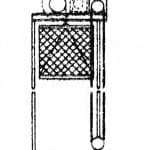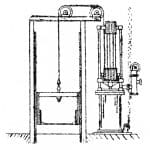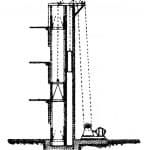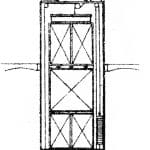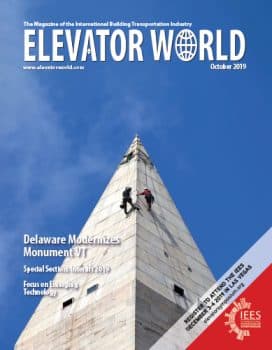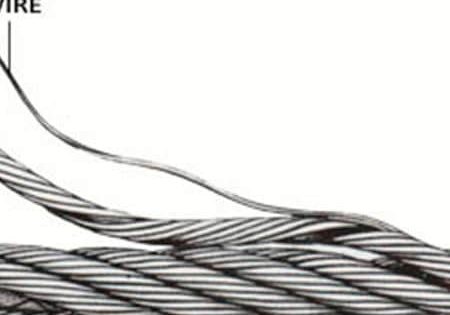The first multilanguage technical dictionaries were rich visual resources in small packages.
In 1906, German engineers Kurt Deinhardt and Alfred Schlomann, working with publisher R. Oldenbourg of Berlin, produced the first volume of what became known as the Schlomann-Oldenbourg Illustrated Technical Dictionaries in Six Languages. The languages were German, English, French, Russian, Italian and Spanish. Most of the books in the series were published between 1906 and 1920, with the final volume (Volume 17, on aeronautics) appearing in 1932. The series represented the first multilanguage technical dictionaries, and their design followed a unique format. The subject matter was divided into discrete sections, with the terms grouped by common themes or topics, rather than being presented in a simple alphabetical listing. This allowed readers to easily access the terminology associated with individual system components, as well as overall machine design. The books also included hundreds of drawings and diagrams intended to serve as visual definitions. This feature expanded the utility of the books beyond resources that simply allowed users to find an equivalent term in another language. Schlomann served as the editor for most volumes, with each “compiled” by a lead author who gathered and vetted terms submitted by “contributors and revisors.” The latter groups were composed of engineers and manufacturers’ representatives who specialized in a given volume’s subject matter. In 1910, this methodology was applied to Hoisting and Conveying Machinery.[1]
The new dictionary, which was Volume 7 in the series, was compiled by Paul Stülpnagel (described by Schlomann as a certificated engineer of Duisburg, Germany). It was organized into 15 chapters:
- 1.) Load and Movement of Load
- 2.) Fundamental Principles of Dynamics
- 3.) Elements of Lifting machinery
- a. Lifting Gear
- b. Geared Transmission
- c. Transmission Gear
- d. Stopping Gear Stop Motion е. Fastenings
- 4.) Iron Constructions and Statics
- 5.) Materials of Construction and their Strength
- 6.) Driving Gears and Control
- a. Hand Driving
- b. Engine Driving
- c. Electric Driving
- d. Steam Driving
- e. Hydraulic Driving
- f. Pneumatic Driving
- g. Piping
- h. Control Gear
- 7.) Gears and Gearing
- 8.) Simple Lifting Tackle
- 9.) Winches
- 10.) Cranes
- 11.) Tracks and Rails
- 12.) Lifts, Elevators
- 13.) Conveying and Transporting Devices
- 14.) Stores and Warehouses
- 15.) Rope Haulage”
The book’s organization followed an approach designed by Deinhardt and Schlomann:
“The arrangement adopted in the present volume, which deals with hoisting and conveying machinery, is such that the opening chapters deal with the fundamental principles and elements of these machines, whilst those which follow treat of the actual working plant built up from these elements and component parts. The work concludes with varying combinations of plant and machinery.”[1]
The list of “contributors and revisors” was divided into six
groups — one dedicated to each language. The list is surprising in that it includes very few elevator companies. (Atelier Abel Pifre in Paris was the only major firm listed.) Equally surprising is the fact that the only American contributor listed was General Electric Co. While the company built electric motors used by manufacturers, it was not directly engaged in building elevators. Chapter 12 focused on passenger and freight elevator systems and included 213 terms and phrases and 139 images. The book’s six chapter titles (“Aufzüge,”; “Lifts, Elevators”; “Ascenseurs”;
“Подъёмники”; “Montacarichi, ascensori, elevatori”; and
“Ascensores, montacargas”) reflected its multilanguage format.
The English title appears to imply that British and American terms will be found throughout the chapter. However, a careful reading of the contents reveals an almost complete absence of American terms. And, in fact, while the term “lift” appears consistently, very few British lift-specific terms are present.
The English entries are essentially direct translations from their German counterparts, rather than the equivalent British or American technical term. One example that illustrates this is the translations provided for an elevator control system:
Aufzugsteuerung
hoist control
[appareil de] manœuvrer de l’ascenseur
управляющiй механизмъ лифта; механизмъ для управленiяподьёмникомъ
apparecchio di manovra dell’ascensore o di comando (aparto de) maniobra del ascensor”
None of these terms or phrases describes, from an American perspective, the control system illustrated in the image that accompanied this entry, which clearly depicts what was commonly known as a “shipper rope” (Figure 1).
The differences in the equivalency of technical terms also extended beyond American “English,” as illustrated by one of the hydraulic elevator entries:
“mittelbar wirkender hydraulischer Aufzug
indirect acting hydraulic lift
élévateur ou ascenseur hydraulique à action indirect
гидравлическiй подъёмникъ uлu лифт непрямого uлu посредственнаго дeйcтвiя
ascensore idraulico ad azione indiretta ascensor hidráulico de acción indirecta”
This entry was accompanied by an image that depicted a roped hydraulic elevator (Figure 2). The use of the word “indirect” reflected the difference between a “direct” hydraulic system (in which a piston or ram lifted the car) and a roped system (that employed a hydraulic cylinder and multiplying sheaves and which was located in or adjacent to the hoistway). In America, these systems were known as “vertical hydraulic elevators”; in England, they were referred to as “suspended lifts”; and, in France, they were typically called “ascenseurs sans puits.” These inconsistencies in translation worked against an important goal of the series, which had been put forth by the editors in the first volume: “The specialist engineer having a thorough knowledge of his branch will easily. . . be able to translate the terms from his own language into any other.”[2]
Despite these problems, the dictionary was a remarkable accomplishment, and its presentation of late 19th- and early 20th-century European technology makes it a valuable resource. Following the series’ strategy of moving from general topics to specific components to full systems, Chapter 12 opens with general terms and concepts, followed by material on shafts, doors, guides, cars, safeties, drums, controllers and indicators, and concludes with elevator types and systems. In many ways, the dictionary’s most interesting feature is the illustrations that accompany most of the entries. The illustrations are also the book’s most challenging feature due to the publisher’s decision to produce the series as “pocket books.” Each bound volume measures only 7 X 4.25 in., which limits the interior pages to 6.75 X 3.875 in. The pages employ a three-column design, with German, English and French on the left, Russian, Italian and Spanish on the right, and images (when provided) in the center. This design’s small pages limited the room allotted to illustrations. The average image size is 0.75 X 0.75 in. (Figure 3).
The small size did not, however, mean low quality. When their size is increased (as was done for Figures 1 and 2), the level of detail is clear. Thus, while their size challenges the viewer, they constitute a rich visual resource that clearly explains key topics and, at the same time, prompts numerous questions. Six entries use a variation of the same drawing, which appears to depict a modern elevator (by 1910 standards) with an electric motor and winding drum (Figure 4). However, this image was not used to illustrate the entry for the electric elevator. The image that accompanied that entry depicted a system that appears to employ an electric motor mounted on top of the car and linked to a continuous system of ropes (Figure 5). Evidence exists that suggests this image was derived from a drawing of a specific elevator system; however, that system has not yet been identified, and the evidence that supports this claim presents yet another mystery.
Chapter 12 included entries for a variety of elevator types, including passenger elevators:
“Personenaufzug, Aufzug für Personenbeförderung
passenger lift
ascenseur pour [le service de] passagers ou de personnes
подъёмникъ uлu лифтъ для людей; пассажирскiй
подъëmникъ
ascensore per persone
ascensor [para el transporte] de personas”
The image that accompanied this entry depicted a vertical hydraulic elevator (Figure 6). A close examination of the image (comparing it to Figure 7) reveals the unknown author of the book’s drawings worked from existing sources. The image is a simplified version of an 1876 drawing of William E. Hale’s Standard Hydraulic Elevator (which, by 1877, was known as “Otis’ Standard Hydraulic Elevator”). This original appeared in an Austrian report on the Centennial Exhibition of 1876: “Passenger Elevators, Freight Elevators and Mine Hoists” (“Personen- und Lastenaufzüge und Fördermaschinen”), written by Alois Riedler and published in 1877.
That the dictionary’s editors, authors and contributors likely had access to Riedler’s report is, perhaps, not surprising. That they chose to use this image as the visual representation of a “modern” passenger elevator, however, is. While the Otis Standard Hydraulic Elevator was the most common hydraulic system on the market in 1910, its design had changed over the years, and the 1876 image was not an accurate representation. Adding to the odd nature of this editorial choice is that fact that a drawing of a modern Otis hydraulic elevator was used to illustrate an “indirect acting hoisting engine” (Figure 8). Equally puzzling is the fact that a different image accompanied the “indirect acting hydraulic lift” entry (Figure 2). The inconsistent use of images parallels the inconsistent use of accurate equivalent foreign phrases for a given topic. A future project will involve tracking down all the image sources to determine their accuracy as “visual” definitions and to discover the resources that informed the production of this intriguing book.
The exploration of this dictionary revealed the challenges of attempting to assemble an industry-specific multilanguage technical dictionary. It also revealed the potential need for a historical multilanguage technical dictionary. While such a project would be difficult, it would allow readers to better understand literature that addresses older systems, the various applications of this technology across national boundaries and the origins of the modern vertical-transportation lexicon.
- Figure 1: Elevator controlled by a shipper rope
- Figure 2: Roped hydraulic elevator
- Figure 3: Typical page (half size)
- Figure 4: Winding-drum electric elevator system
- Figure 5: Electric elevator (type and source unknown)
- Figure 6: Passenger elevator
- Figure 7: Hale’s Standard Hydraulic Elevator (1876)
- Figure 8: Otis Standard Hydraulic Elevator (circa 1900)
References
[1] A. Schlomann, Editor. Schlomann-Oldenbourg Illustrated Technical Dictionaries in Six Languages, Volume 7: Hoisting and Conveying Machinery, London: Lewenz & Wilkinson, Ltd. (1910).
[2] K. Deinhardt and A. Schlomann, Editors. Illustrated Technical Dictionary in Six Languages: English, German, French, Russian, Italian, Spanish, Volume 1: The Elements of Machinery (and the Tools Most Frequently Used in Metal and Wood Working), London: Archibald Constable & Co, Ltd. (1906).
Get more of Elevator World. Sign up for our free e-newsletter.
